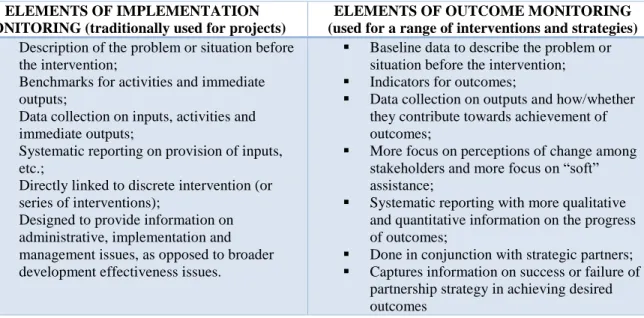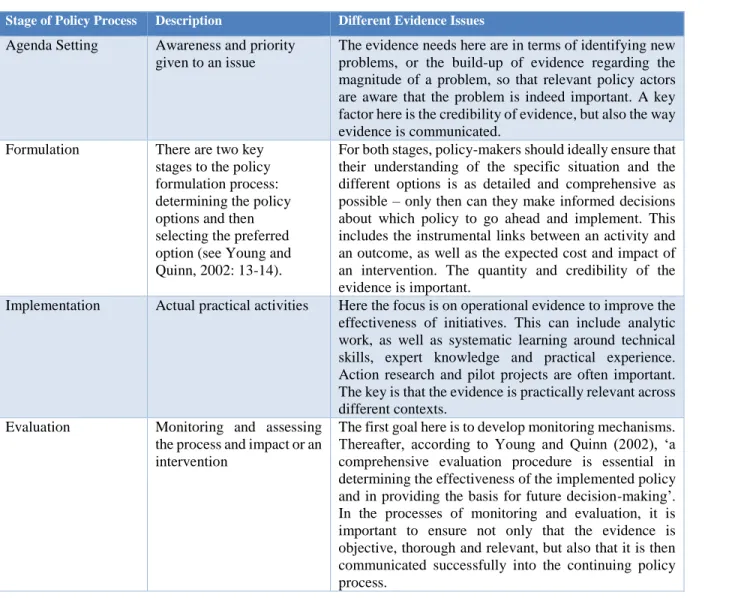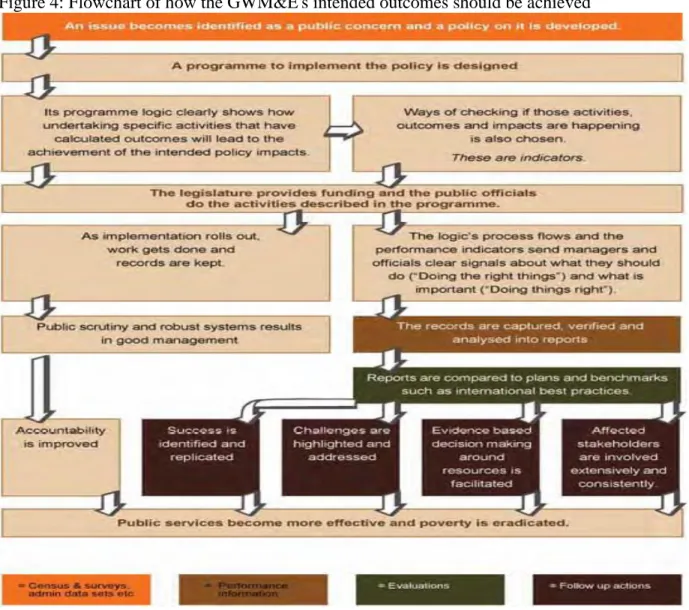Introduction
Research problems and objectives: broad questions
Research Problems and Objectives: key questions
What are the different perceptions of IPMS by the people implementing it in uMngeni Municipality. What structures, mechanisms and processes are used in the implementation of IPMS in uMngeni Municipality.
Overview of research methodology and design
- Case study
- Sample
- Data Collection Method
- Data Analysis
What are the experiences (regarding IPMS) of the people involved in the implementation of IPMS in uMngeni Municipality. According to the municipality's organogram (attached as Appendix 2), uMngeni Municipality consists of six departments, which include the municipal manager's office.
Limitations of the study
Structure of the dissertation
For the purpose of the present study, the focus is on the Individual Performance Management System (IPMS). In 2011, the council approved the first draft of the municipal performance management system (PMS framework) (municipal key informant, 2013).
Public Policy
- Policy Implementation
The next section provides an analysis and further details of the implementation phase in the policy cycle. The structures must be flexible enough to allow for changes in strategies in the implementation process.
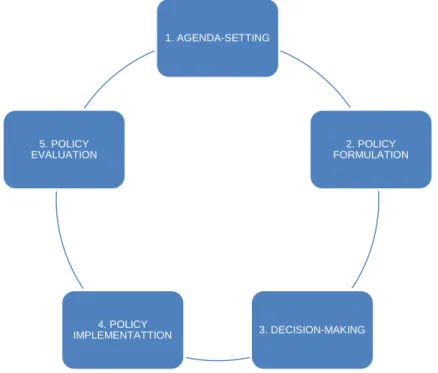
New Public Management
- The Performance Management System
- Purposes and Uses of the PMS
- Structures, Mechanisms and Processes for Implementing PMS
Performance measurement is the main component of performance management, which determines all processes, practices and improvement of performance management systems (Asmah-andoh, 2009:204). A general understanding of performance management would include performance indicators, performance measurement and the use of information for better management”.
Critique of New Public Management and Performance Management
Theories of the private sector may not necessarily be relevant in the public sector, as there is a fundamental difference in their objectives. This study is interested in the experiences, understanding and challenges of implementing IPMS, part of PMS.
Monitoring and Evaluation
- Results-Based Monitoring and Evaluation
- Evidence-Based Management
They can be carried out during the planning, implementation or post-implementation (after completion) stages of a program or policy. Then, in the evaluation phase, a comprehensive evaluation process is essential to determine the effectiveness of the implemented policy and provide a basis for future decision-making.

Conclusion
The responsibility for the development of the municipality's performance management system rests with the municipality's political leadership. 48 appointed by the municipal council must (a) manage the development of the municipality's performance management system; (b) assign responsibilities in relation thereto to the municipal manager; and (c) submit the proposed system to the municipal council for acceptance". The current organizational chart shows that the performance management unit belongs to the municipal director's office.
Hence the existence of the government-wide monitoring and evaluation system, presented as the performance management system (OPMS and IPMS) in local government. 72 that managers clearly understand that they play a key role in the implementation process of the performance management system. This indicates that the managers do not feel sufficiently motivated and supported as implementers of the municipality's performance management system.
This led to a hypothesis that better understanding of the performance management system results in improved performance. The objectives of the system are clearly stated and communicated through the performance management framework of the.
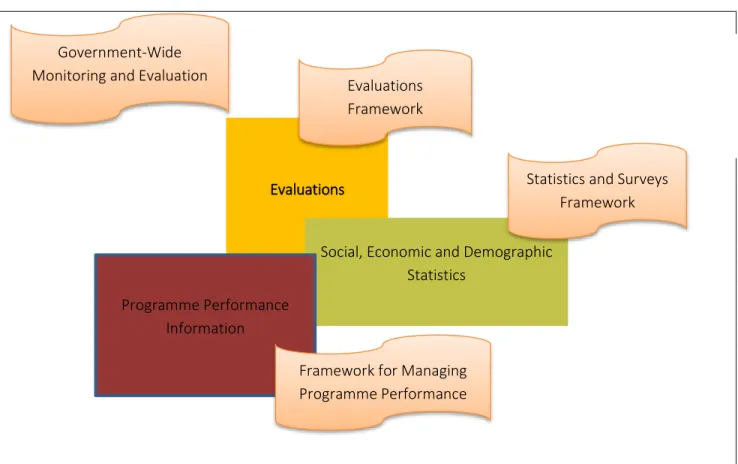
The GWM&E System
- The GWM&E Policy Framework
The GWM&E and Local Government
- Purposes and Uses of IPMS
- Structures, Mechanisms and Processes for Implementing IPMS
This implies that the community is also a role player in the development and implementation of the SMP. Regulations 4, 23, 25 and 26 of the Local Government Performance Regulation for Municipal Managers and Managers Directly Responsible to Municipal Managers: Regulation No. The evaluation panels for evaluating the performance of the municipal manager and managers directly responsible to the municipal manager are a mix of internal and external stakeholders.
A personal development plan (PDP) to address development gaps must form part of the performance agreement.".
Conclusion
The chapter begins with a brief background of the municipality, its vision and mission, and a description of the performance management system in the municipality. Finally, in the context of municipal performance management (uMngeni Municipality 2, 2013) it is stated that employee performance evaluation is the basis for rewarding exceptional performance or correcting unacceptable performance. In turn, this informs the performance appraisals that are conducted to evaluate the performance of individual managers.
108 7.1.1 Standards and procedures for evaluating employee performance; and 7.1.2 Employee performance evaluation intervals.
Background
According to uMngeni Municipality's integrated development plan, the municipality is characterized by high-potential agricultural land, which is the primary source that supports the commercial agricultural sector. The municipality's vision is "...to develop as a people-focused, efficient and cost-effective municipality that delivers quality services and sustainable socio-economic development" (uMngeni Municipal Document: 2013:79). This includes capacity building of the municipality's staff, which is one of the areas that the present study seeks to understand in relation to the individual performance management system.
The municipality's administration is led by the municipal manager together with the day-to-day managers (HODs) who report directly to the municipal manager.
The Performance Management System at uMngeni Municipality
- Purposes and Uses of IPMS
- Structures, Mechanisms and Processes for implementing IPMS
The actual implementation and operation of the PMS takes place simultaneously with the implementation of the IDP. The audit process includes an internal audit by internal auditors, the participation of the performance audit committee and an external audit by the chief auditor. Performance reviews of HODs are carried out by the Municipal Manager of uMngeni Municipality, the Chairman of the Review Committee, the Deputy Mayor (or any other EXCO member) and the Municipal Manager of another municipality.
These appraisal meetings are recorded and feedback is given based on the evaluation of the employee's performance.
Conclusion
The assessment also allows, by agreement between the employer and the employee, to review and make reasonable changes to the provisions of the performance plan from time to time for operational reasons (uMngeni Kommune 2, 2013). To report on all aspects of performance, giving a true, honest and accurate account of the objectives set by the Council and the success or otherwise in achieving those objectives."
Introduction
66 This study did not investigate whether citizens are satisfied with the services provided or not (no citizens have been interviewed), but whether those who run services have a clear understanding (mainly linked to capacity and facilitation of municipal performance) of the systems , which is designed. to enable them to deliver. The provincial government shall "establish municipalities in its province in a manner consistent with law ... and shall by legislative or other measures (a) provide for the supervision and support of local governments in the province and (b) promote the development of local authorities capacity to enable municipalities to perform their functions and manage their affairs.” This was the reason for conducting an interview with the respondent from the Department of Cooperative Management and Traditional Affairs in the Performance Management Unit.
This respondent was interviewed with the intention of clarifying the ideal situation (as intended by the IPMS) versus what the real situation is (as inferred by the managers interviewed).
Conceptualisation of IPMS within uMngeni Municipality
- Purposes and Uses of IPMS
- Structures, Mechanisms and Processes for implementing IPMS
- Experiences of Implementing IPMS within uMngeni Municipality
Performance management is a system of measuring the performance of individuals within an organization, as well as the organization's own performance against the organization's goals or objectives. With this there is what we call OPMS, which is the management of the performance of the entire organization of the municipality as a collective. In terms of mechanisms, COGTA's performance management system is a results-based monitoring and evaluation system that provides tools and guidelines for implementation.
Capacity to fulfill these roles and responsibilities emerged as one of the important elements in the implementation process (Brinkerhoff and Crosby, 2002:86).
Conclusion
This explains the existence of the government-wide monitoring and evaluation system, presented as the performance management system (OPMS and IPMS) in local government, as described in chapter three. The chapter indicated that an organization's performance management system is an integral part of the individual performance management system as it informs senior managers' performance agreements and performance plans. This in turn forms the basis for the performance evaluations conducted to assess the performance of individual managers.
The purpose of this study is to explore and describe the concepts, experiences and challenges of implementing individual performance management internally. Explain whether there is a clear understanding and appreciation of the value of individual performance management that is cultivated by all stakeholders (especially top management, employees and the community). The assessment shows that the employee achieved the above fully effective results with respect to more than half of the performance criteria and indicators and fully achieved all the others throughout the year.
Discussion and Conclusion
Interview Guides
How is this process implemented in the municipality. please describe the tools used and the key players in the implementation). Please describe what kind of support (if any) is there to ensure proper implementation of IPMS in uMngeni Municipality (can be internal or external). Do you think the implementation of IPMS is compliance driven or service delivery driven by both.
Who are the key players in the implementation of IPMS within municipalities and what are their roles and responsibilities?
Organogram of uMngeni Municipality
The Performance Management System- Documenting and Reporting Tools
105 6.1 The employee undertakes to actively focus on the promotion and implementation of KPAs (including special projects that are relevant to the employee's responsibilities) within the municipal framework. The assessment indicates that the Employee has achieved the above fully effective results in relation to all performance criteria and indicators as specified in the performance agreement and the performance plan and maintained this in all areas of responsibility throughout the year. The assessment indicates that the employee has fully achieved effective results in relation to all significant performance criteria and indicators as specified in the performance agreement and performance plan.
The assessment/assessment shows that the employee has achieved below fully effective results on more than half of the key performance criteria and indicators as specified in the Performance Agreement and the Performance Plan. The assessment/assessment shows that the employee has achieved below fully effective results on virtually all performance criteria and indicators as specified in the Performance Agreement and the Performance Plan. The employee has not demonstrated the commitment or ability to bring performance to the level expected in the position, despite management's efforts to encourage improvement. In that case, the Employee will be fully consulted before implementing such a change.
